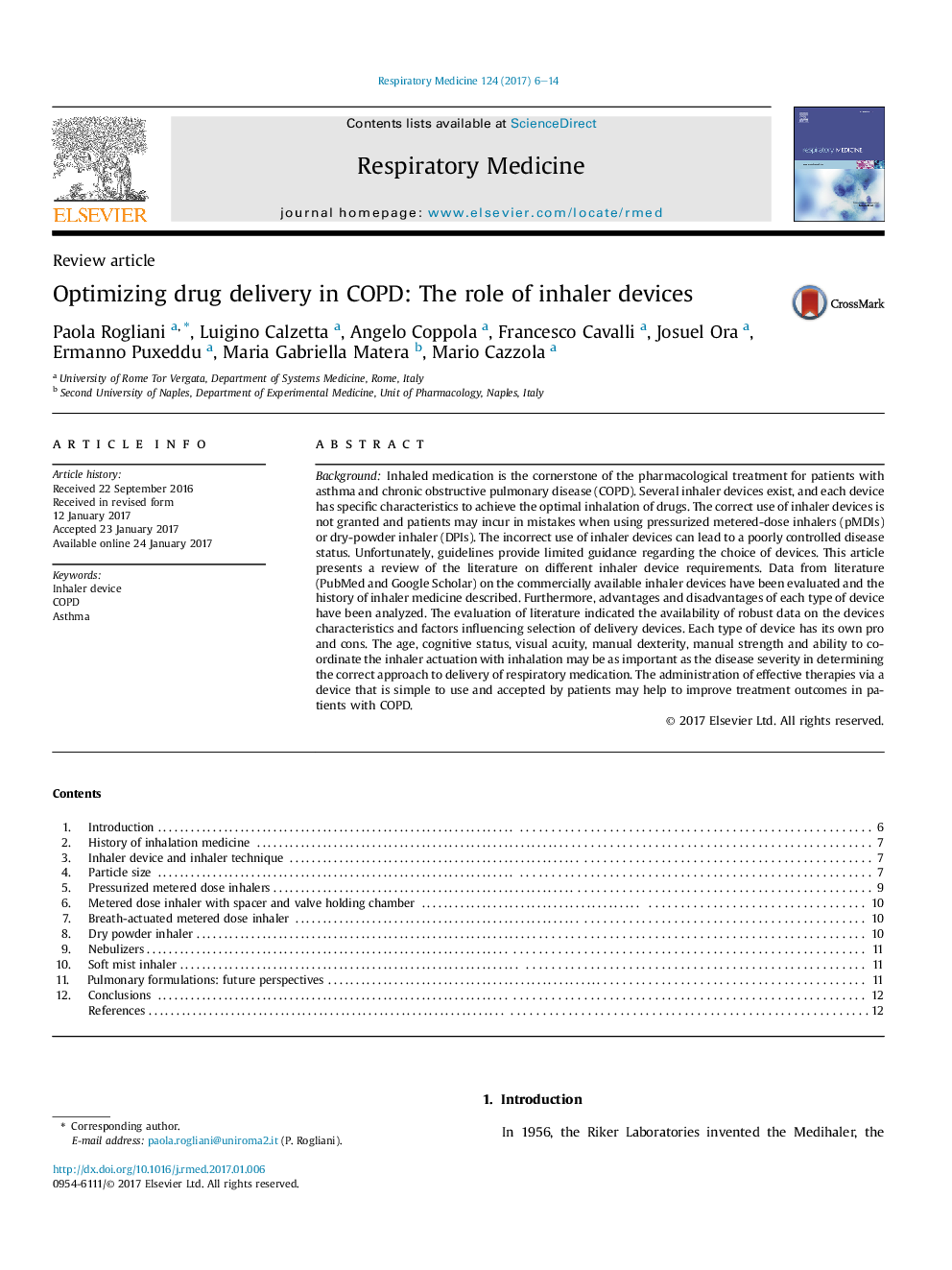| Article ID | Journal | Published Year | Pages | File Type |
|---|---|---|---|---|
| 5725042 | Respiratory Medicine | 2017 | 9 Pages |
â¢A pragmatic review on the currently available inhaler devices for treating COPD.â¢Incorrect use of inhaler devices can lead to poorly controlled disease status.â¢Different devices are characterized by different advantages and disadvantages.â¢Delivering therapies via effective and easy to use devices improve COPD outcomes.â¢The choice of an inhaler device should be related with patient's characteristics.
BackgroundInhaled medication is the cornerstone of the pharmacological treatment for patients with asthma and chronic obstructive pulmonary disease (COPD). Several inhaler devices exist, and each device has specific characteristics to achieve the optimal inhalation of drugs. The correct use of inhaler devices is not granted and patients may incur in mistakes when using pressurized metered-dose inhalers (pMDIs) or dry-powder inhaler (DPIs). The incorrect use of inhaler devices can lead to a poorly controlled disease status. Unfortunately, guidelines provide limited guidance regarding the choice of devices. This article presents a review of the literature on different inhaler device requirements. Data from literature (PubMed and Google Scholar) on the commercially available inhaler devices have been evaluated and the history of inhaler medicine described. Furthermore, advantages and disadvantages of each type of device have been analyzed. The evaluation of literature indicated the availability of robust data on the devices characteristics and factors influencing selection of delivery devices. Each type of device has its own pro and cons. The age, cognitive status, visual acuity, manual dexterity, manual strength and ability to coordinate the inhaler actuation with inhalation may be as important as the disease severity in determining the correct approach to delivery of respiratory medication. The administration of effective therapies via a device that is simple to use and accepted by patients may help to improve treatment outcomes in patients with COPD.
